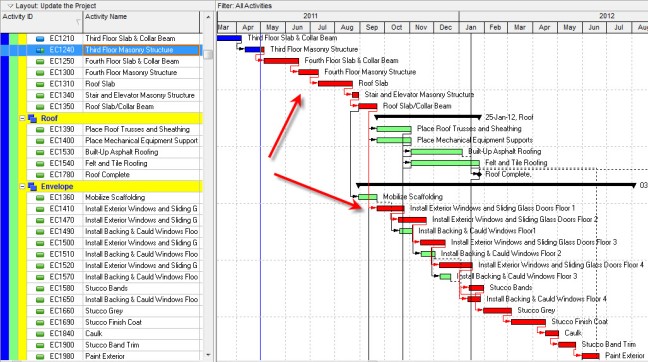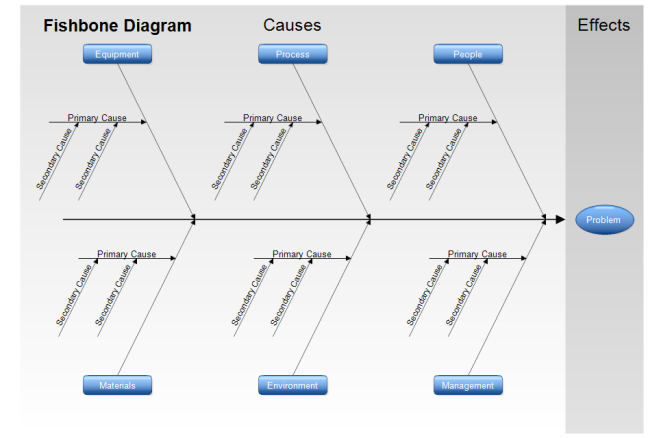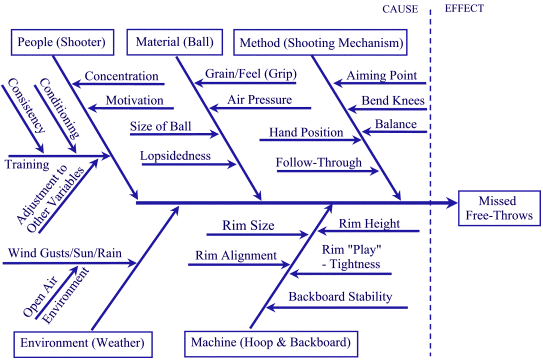Project Risk Management is essential in every project management process. It’s important because the only certain thing in the world is uncertainty. A project risk is an uncertain event that, if it occurs, has a positive or negative effect on the prospects of achieving project objectives. Now I don’t wanna ramble on with theories on Project Risk Management because that would be boring, instead I will give you a tip to quickly starting risk analysis on your project.
You already know what to do to by making a Work Breakdown Structure (WBS), project schedules (network diagram), and even to budgeting. That’s a good start. Now where should you start looking, or identifying project risks that could occur and ruin the whole project? How To identify them?
The Critical Path
The easiest way to identify where the risks could occur is to start looking at your critical path. What is critical path? Critical path is the the longest path of planned activities to logical end points or to the end of the project, and the earliest and latest that each activity can start and finish without making the project longer. The activities which is in the path is called the Critical Activities. If one of these activities get behind schedule, your whole project will be delayed.

Take a good look at the graphic above. Above is an example of Critical Path, and Critical Activities. You see those red bars? Those red bars indicate the critical activities with their duration of activities. From this, we can conclude some of the critical activities for this multistory building construction project are:
- Third floor masonry structure,
- Fourth floor slab and collar beam,
- Fourth floor masonry structure,
- Stair and elevator masonry structure,
- Roof slab/collar.
So, if the Roof slab, or the stair and elevator masonry structure work is delayed, the whole construction project oh this multistory building will be delayed. Delay on a project means waste of energy, waste of materials, and financial loss. In short, the critical activities are the most risky activity, that when one of the them is delayed or troubled, it would jeopardizing the whole project.
If you’re still confused about abut the critical path, try using Microsoft Project (or Primavera) to make your project schedule. It will automatically generates a critical path. Still confused? Well then follow this blog and I will make a blog post specifically on project scheduling.
Ishikawa Diagram
Now, we know where to look, how to identify what could go wrong in these critical activities? I’m gonna show you the simplest way to identify risks by using a simple diagramming method, named Ishikawa Diagram. Ishikawa Diagram is a cause-effect analysis tools that using diagram that looked a lot like a fish bone. that’s why it’s also called fish bone diagram.

Now, use this diagram to identify risks in each critical activities so we can analyze those identified risks and making contingency plans.

For example, take a look at the diagram above. Now, switch the Problem, “Missed Free-Throws” with, for example, “Delay on Project Completion,” or “Structural Failure.” After that start thinking of the sources of each causes of the problem. The sources could originated from:
- Materials (e.g. Ball),
- Manpower (e.g. Shooter),
- Method,
- Money,
- etc….
Then, start thinking the primary causes and the secondary causes for each origin of the Problem. The more detail is better.
In my opinion, although this diagramming method is quite simple to identify risks, but sometimes it’s kind of hard to make a very detailed risk identification with this technique.
What about you? What is the quickest way to identify project risks according to your experience? Share your thoughts and experience in the comment section below.

